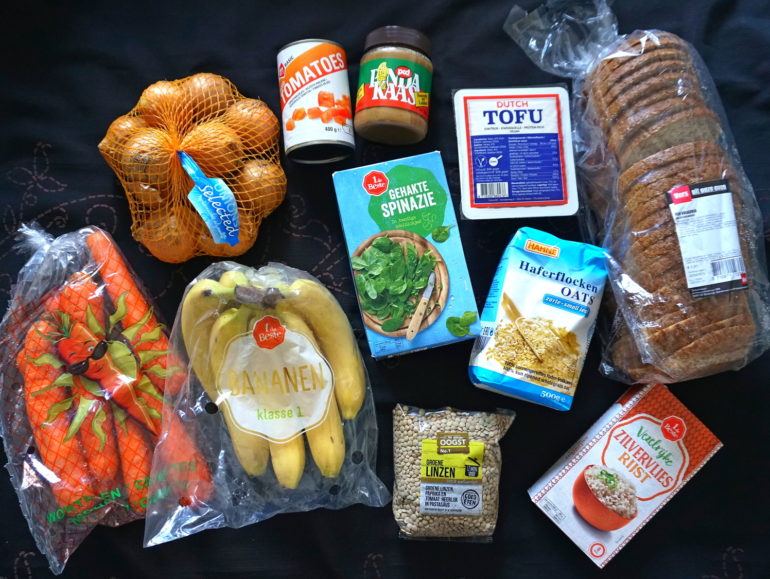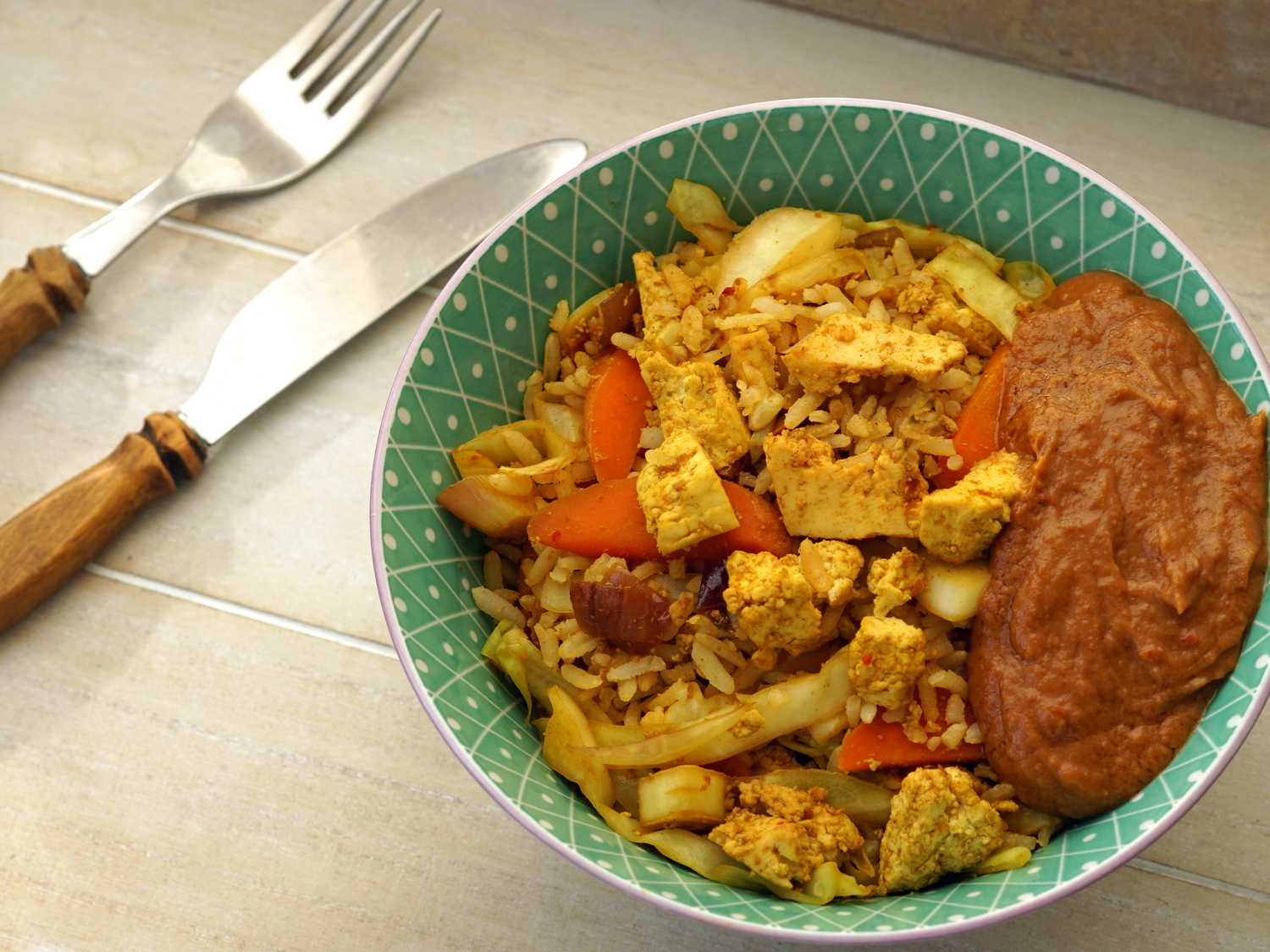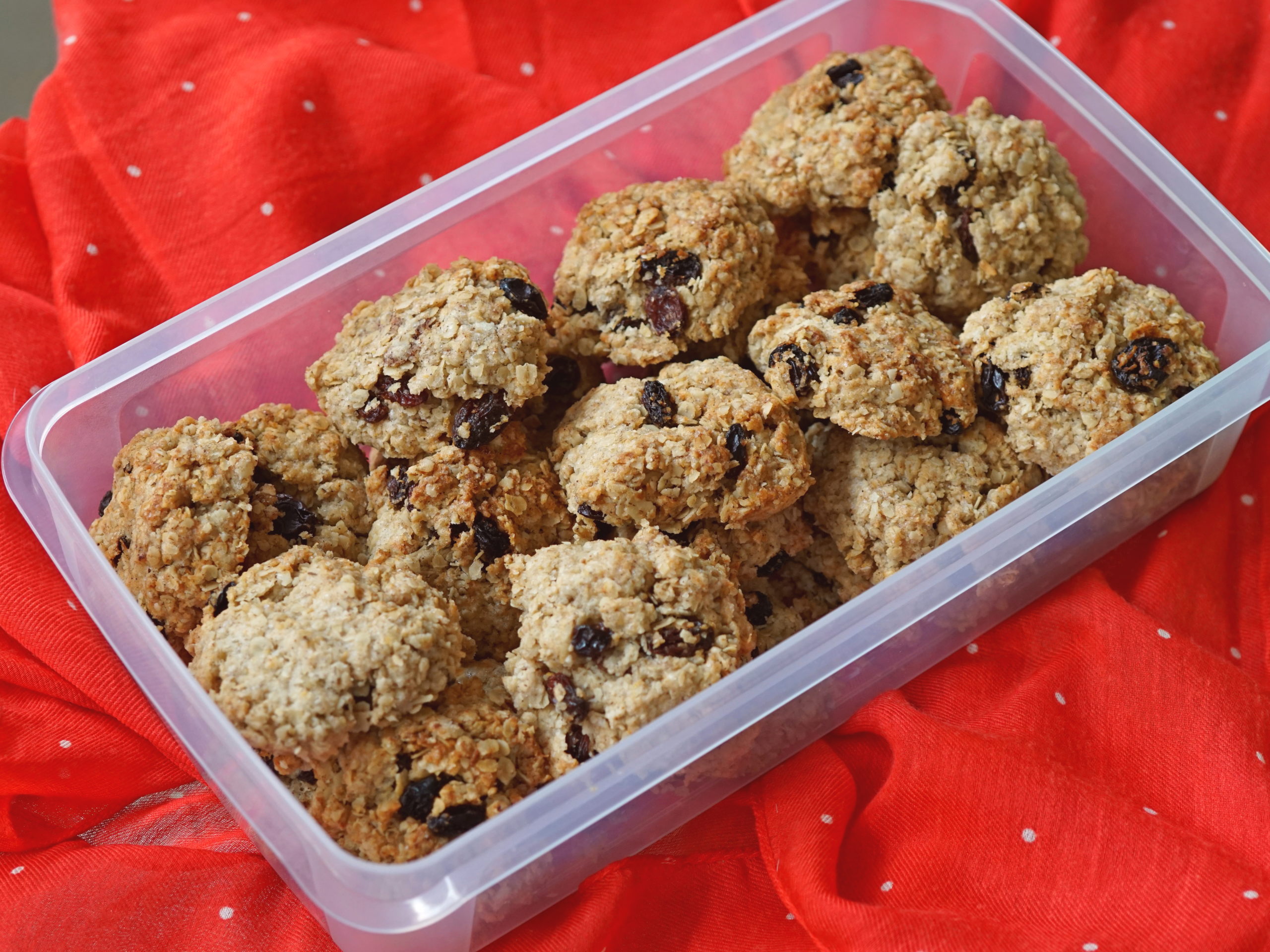Vegan on a very low budget (€ 10-15 per week)
| Tags: | Healthy, Low budget |
|---|

It's tempting to spend a lot of money on food, especially when fancy new vegan products seem to be coming out every week. Looking at the prices of these products, you might conclude that vegan food is expensive. Fortunately, plant-based food can also be very cheap. For many people, meat and cheese are the most expensive items on their grocery bill. If you replace these with cheap and healthy plant-based alternatives, it's possible to save quite a bit of money. This post will empower you to eat vegan and healthy on a budget.
The first time I experimented with eating on a very low budget was in 2013, when ate for a week with only 10 euros (11-12 USD). That was quite a challenge and very stressful, but I managed. I wanted to try something like this again, to see if it would still be possible and to try and make my menu a bit healthier. I also have a lot less time to spend in the kitchen, so the food also needed to be easy and quick to prepare.
Below I will share my basic shopping list, with a nutritional analysis and tips for finding the best grocery deals. This is the start of a series with low budget recipes and menus. I hope these posts will be useful for anyone living on a small budget, because I know it can be very rough. This is definitely not meant to demonstrate how 'easy' it is to eat cheaply, but rather to give you some ideas on how to cope. If you are struggling, please don't hesitate to ask for assistance and use available resources such as food banks and pantries. I have enormous respect for people who manage to get by on a tiny budget.
Basic groceries for 10 euros
The cost of the shopping list below amounts to € 10.17 a week. I took the prices from one of the biggest Dutch supermarkets. It's possible to get slightly cheaper prices at discount supermarkets, such as Aldi. In the Netherlands groceries are relatively cheap. Prices in your country may be higher, but I tried to pick basic products that are relatively cheap almost anywhere. However, you may need to make adaptations depending on where you are in the world.
- 500 g (17 oz) oatmeal - € 0.50
- 400 g (14 oz) brown rice - € 0.59
- 1 wholegrain bread - € 1.00
- 350 g (12 oz) peanut butter - € 1.11
- 1 liter (1 quart) soy milk - € 0.88
- 500 g (17 oz) brown lentils - € 0.99
- 500 g (17 oz) of tofu - €1.40
- 1 kg (2 pounds) carrots - € 0.59
- 1 kg (2 pounds) onions - € 0.95
- 450 g (1 pound) frozen spinach - € 0.46
- 400 g (14 oz) canned chopped tomatoes - € 0.45
- 1 kg (2 pounds) bananas - € 1.15
This list assumes that you already have oil, salt and spices in the pantry. Of course you will have to top that up every now and then, so in practice you will need to spend a little more than 10 euros. If you don't have any spices at all, at least get cinnamon, curry powder and garlic.
It's helpful to shop for multiple people or for several weeks at once, so you can get bulk packages, which are often cheaper in the long run (for example, a bag with 2 kg of onions is usually cheaper than 2 separate bags of 1 kg). This is a good way to make your money go a little farther.
Meals and recipes that you can make with ingredients from this list are for example baked oatmeal, oat pancakes, sandwiches with banana and peanut butter, oatmeal cookies, oat milk, vegan mayo, lentil burgers, savory lentil spread, carrot soup, tomato soup, grated carrot slaw, lentil soup, tofu fried rice with peanut sauce (picture below), spinach curry, tofu stir fry and lentil chili.

To keep it interesting, you will need to get creative and coax a wide variety of flavors and textures from the ingredients. Otherwise, eating oatmeal and lentils every day will get boring very quickly. It's useful to make a meal plan (use reverse meal planning, based on what you have on hand) and possibly do a little bit of prep. This way, you won't find yourself staring at the pantry, wondering wat you are going to eat. This really prevents a lot of stress. If you want, you can use the meal plans that I will share in later posts.
The nutritional value
I have designed my basic shopping list so that it contains all important nutrients and meets guidelines for healthy food as much as possible. You can read more about this below.
- If you use 250 ml (8.5 oz) of oil on top of the products on the week's shopping list, the food provides a daily average nutritional value of 1950 kcal per day, with 70 grams of protein and 44 grams of fiber, which is sufficient for an average sized woman like me. If you are particularly active or tall, add a little more oatmeal, rice and bread, or get a bag of flour so you can make your own pancakes and bread.
- The shopping list allows for 500 grams (1 pound) of fruit and vegetables (slightly more vegetables than fruit, because vegetables are usually cheaper and have better nutritional value than fruit).
- It's important to choose whole grain products as much as possible. These are often slightly more expensive than white flour products, but they are associated with many health benefits, contain more nutrients and have more fiber, to keep you satiated for longer.
- The lentils are an important protein source and can be replaced with other legumes, such as chickpeas or kidney beans. Instead of brown rice, you could also use whole wheat pasta or potatoes.
- Vitamin C is on the tight side in this list, so stock up on some oranges or peppers if they are on sale.
- Calcium comes from the tofu, soy milk and spinach, so don't leave these out! You can also use (frozen) kale instead of spinach.
- Make sure to use iodized salt, or include some seaweed or iodine supplements.
- As always on a plant-based diet, it is very important to take vitamin B12 supplements, especially when you are not eating a lot of fortified products. Thankfully cheap store brand supplements are generally just as good as more expensive name brands, so don't spend more than you need to.
- Preferably choose rapeseed/canola oil for omega 3 fats, but if that is unavailable, sunflower oil is also fine.
Treats
When I did my first 10 euro challenge, I noticed how hard it is to not have any treats. A cookie every now and then brightens up your whole day! Fortunately, there are quite a lot of cheap accidentally vegan cookies and even chocolate. Baking your own desserts can also be very affordable. Try my oatmeal cookies for instance (picture below). Homemade popcorn is great for a savory snack. Popping corn is very affordable and you can use spices to flavor it many different ways. It is also nice to have some variety of drinks in addition to water, like tea, (sugar-free) fruit syrup or powdered drink mix.

Top tips for saving on groceries
Finally, a few tips if you have to eat on very little money for a longer period of time. Some things may seem a bit stingy or weird at first, but once you get your budget under control, it gives you a huge sense of power and freedom!
- Compare the price per weight (kg or pound) of everything you buy. These are often printed on the price tag in the store, but you can also calculate it yourself. In the Netherlands it makes sense to aim for 1 euro per kilo for fruit and vegetables, 1-2 euros per kilo for pasta, potatoes and rice and 2-3 euros per kilo for protein sources such as legumes, tofu, and peanuts/peanut butter. The cost will vary by country, but if you keep a price list of the products you buy the most, you can compare between stores and find the best prices local to you.
- Only buy what you really need. I love soy yogurt, vegan sausage and expensive chocolate, but I don't really need these products. You can make some luxury items like meat substitutes and desserts yourself for a fraction of the cost.
- When you go shopping, look on the bottom shelves, buy house brand products and look for the cheapest options for everything. Some 50 cent cookies might taste just as good as the ones that cost of 1.50.
- When products are on sale, always check whether it's actually a good deal. Don't be tempted to buy things you don't really need.
- Some supermarkets are more expensive then others. Especially organic shops and health food stores can be very pricy. Especially when shopping at these 'expensive' stores, pay close attention to sales and make sure to check out the clearance section.
- Depending on your area, open air markets and ethnic grocery stores may be a great place to find affordable vegetables, fruit, herbs and legumes. Always check the prices to see if you're actually getting a good price.
- Eating seasonal vegetables and fruit will help enormously to keep your food cost down. Get peppers and grapes in the summer, turnips and apples in the winter for instance.
- Prevent food waste. Before going out to shop, take stock of your fridge, freezer and pantry. Don't throw out anything edible and turn scraps into luxury items. Make croutons from the crusty ends of the bread, cook stock from your vegetable peels. If you dare, even banana peels can be repurposed into tasty 'pulled pork' (opens in a new tab).
- For specialty products like nutritional yeast and vital wheat gluten, wait for 'buy one, get one free' sales. Those often come around seasonally, so once you find out when those sales happen, you'll know when to stock up.
If you have any questions about my basic shopping list or about eating on a small budget, feel free to ask below! I am also curious about tips for cheaper food in your part of the world. In an upcoming post I will share our ultra low budget menu and tell you about our experiences with this challenge. I will also be sharing several affordable healthy recipes in the near future.

Write a comment